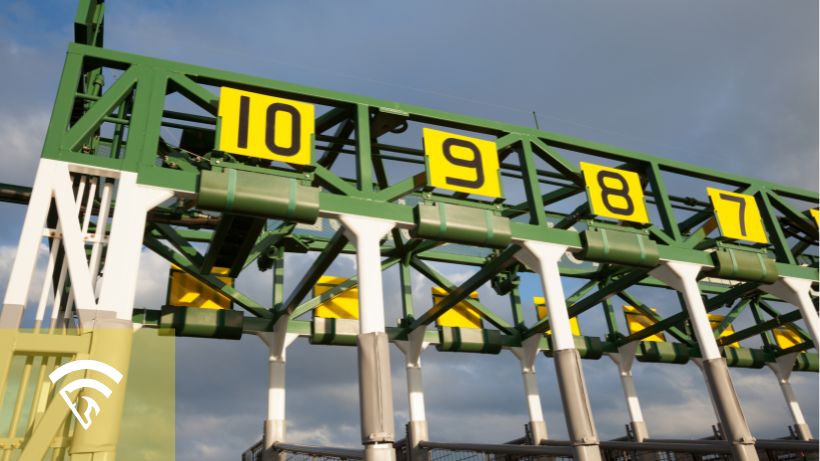What is the Starting Gate in Horse Racing?
The starting gate is the structure that ensures all horses begin a race at the same moment. It’s made up of individual stalls, each assigned to a single horse. When the race begins, the front doors of each stall open at the same time, triggering both the physical start and the official clock.
The use of a mechanical starting gate helps create fairness and consistency. Without it, horses would have to be started manually—an approach that led to false starts and unfair breaks in the early days of racing.
How It Works
Each horse is led into the gate by a team of assistant starters who help keep the horses calm and steady. Once all horses are loaded and settled, the starter presses a button, opening all stalls simultaneously. The moment those doors open, the race is officially underway.
Breaks from the gate are especially important in sprint races, where a slow start can eliminate a horse’s chances in just a few strides. Horses with early speed, particularly front-runners, are often reliant on getting a clean and immediate jump.
Common Starting Gate Issues
Not every horse handles the gate well. Some may balk at entering, rear up, or get restless once inside. Others break slowly or awkwardly once the gates open. These moments can compromise a horse’s position and are often noted in trip comments within the past performances.
Bad experiences in the gate can also lead to mental resistance. In those cases, trainers may use blinkers or employ special handling, such as keeping a gate crew member in the stall with the horse until the final second.
Gate behavior is especially unpredictable with first-time starters, who have never encountered the pressure of a live race start.
Handicapping Implications
The starting gate plays a key role in how a race unfolds. A horse that breaks slowly but needs the lead is at a disadvantage from the start. Post position matters, too—inside horses may get boxed in if they don’t break sharply, while outside horses may be forced wide if they lack early speed.
Trip handicappers pay close attention to the start when reviewing replays, especially if a horse encountered a troubled trip or lost position early. Breaks from the gate can affect pace dynamics, stretch runs, and finishing ability.
When analyzing races, keep in mind the impact of post position, distance, surface, and a horse’s history at the break. The start may only last a few seconds, but it sets the tone for everything that follows.
Final Thoughts
The starting gate isn’t just the beginning—it’s the first test of timing, temperament, and talent. Understanding how horses behave at the break can help you interpret past results more accurately and anticipate how today’s race might unfold.
To study break behavior in real time, check out EquinEdge’s Horse Racing Results, which features nearly live outcomes from tracks like Fonner Park, Lone Star Park, Keeneland, and Parx.
Want to turn insights like this into winning plays?
Sign up for a free EquinEdge account and access advanced data, trip notes, pace projections, and more—all built to help you make sharper decisions, faster.
